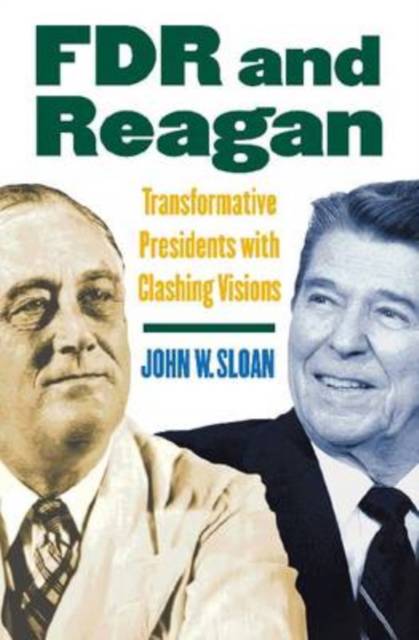
- Retrait gratuit dans votre magasin Club
- 7.000.000 titres dans notre catalogue
- Payer en toute sécurité
- Toujours un magasin près de chez vous
- Retrait gratuit dans votre magasin Club
- 7.000.0000 titres dans notre catalogue
- Payer en toute sécurité
- Toujours un magasin près de chez vous
44,95 €
+ 89 points
Description
Perhaps the twentieth century's most revered presidents, Franklin Delano Roosevelt and Ronald Reagan could not seem more different as standard-bearers of liberal and conservative revolutions. But, as John Sloan demonstrates, they were more similar than most people suppose. One rising out of the Great Depression and the self-defeating efforts of Herbert Hoover, the other out of the malaise of the 1970s and the failings of Jimmy Carter, both these presidents entered office with a mandate for change and oversaw a quantum shift in the national psyche. And while everyone takes their clashing visions for granted, Sloan demonstrates that these two very different presidents shared an ability to replace exhausted old leadership with a genuinely new vision. FDR and Reagan is a study of how old regimes unravel, how new ones are constructed, and how the political system is rejuvenated. Adapting noted presidential scholar Stephen Skowronek's framework, Sloan analyzes how two iconic "reconstructive" presidents redefined the country's fundamental philosophy, priorities, and policies as he weighs their similarities, differences, and impacts. He compares their lives, core policies, and leadership traits and shows that today's politics and policies are still heavily influenced by these key presidencies. Each of these men transformed the way Americans thought about the legitimate role of government, whether providing more security for citizens or stepping back from federal regulation. But, as Sloan reminds us, the new order never totally destroys the old-reconstructive presidents never completely eradicate the ideas and programs associated with the regime they replaced. Big business survived the New Deal, just as the welfare state weathered the Reagan Revolution. As with other transformative presidents before them, the words and deeds of FDR and Reagan have taken on nearly mythical significance; yet Americans remain torn between the economic security offered by one and the economic freedom championed by the other. Sloan's book helps readers see through this contradiction and better understand the decisive role of presidents in promoting national progress.
Spécifications
Parties prenantes
- Auteur(s) :
- Editeur:
Contenu
- Nombre de pages :
- 438
- Langue:
- Anglais
Caractéristiques
- EAN:
- 9780700616152
- Date de parution :
- 02-09-08
- Format:
- Livre relié
- Format numérique:
- Genaaid
- Dimensions :
- 163 mm x 241 mm
- Poids :
- 816 g

Les avis
Nous publions uniquement les avis qui respectent les conditions requises. Consultez nos conditions pour les avis.






